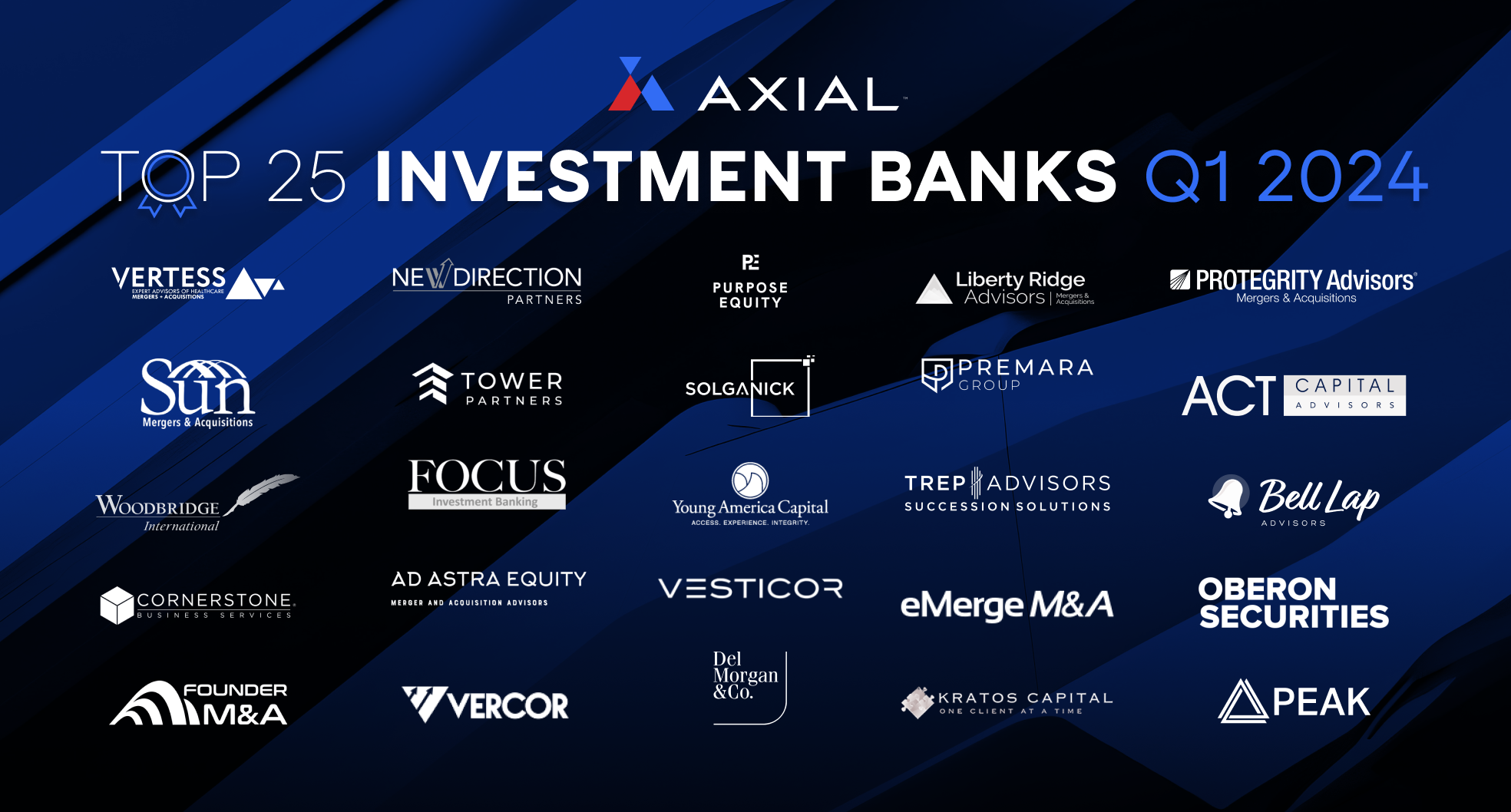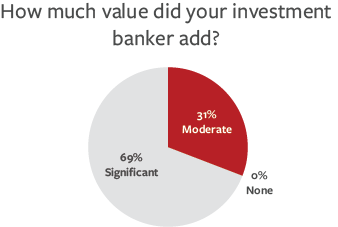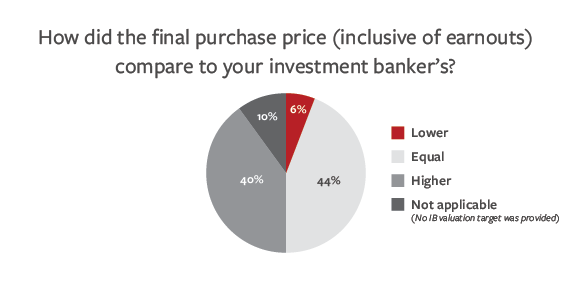
Top 25 Lower Middle Market Investment Banks | Q1 2024
Axial is excited to release our Q1 2024 Lower Middle Market Investment Banking League Tables. To assemble this list, we…
Tags
A 2016 study asked CEOs who had recently sold their businesses with the help of an investment banker whether their advisor added value. For a full 100% of respondents, the answer was yes, with 69% reporting a “significant” impact.

Eighty-four percent of the owners achieved a final sale price equal to or higher than the initial estimate provided by the advisor.

With these kinds of outcomes, one would think hiring an advisor would be a no-brainer. But many would-be sellers are skeptical of the cost of bringing in outside help. Part of the problem is that the specific value-add of an advisor can be opaque until you actually start working with him or her.
Here are three specific ways a good advisor will help you rethink your business to increase valuation and improve terms before a sale.
A successful advisor will…
1) Identify weak links in your management team.
Everyone has blind spots. This is particularly true for founders who have run their companies for decades and built the business from the ground up. There are almost certainly processes that only you have institutional knowledge of, and there are probably management team members you hired years ago who aren’t equipped to handle the company’s current scale.
Both weak management teams and over-involved founders scream risk to potential buyers — leading to lower valuations and/or unfavorable terms (e.g., earnouts as opposed to all-cash deals). It’s easy for owners to understand this risk theoretically, but much harder to spot it in your own business. An advisor can provide the outside perspective CEOs need to identify these blind spots and execute on an action plan before bringing the company to market.
2) Find quick ways to increase cash flow.
After years of running a business a certain way, changing things up can be tough. An advisor will bring a fresh perspective and plenty of first-hand experience to help identify and implement quick wins.
At some level, increasing cash flow is simple. “It’s a diversified customer base. It’s recurring revenue. It’s looking for opportunities to increase productivity and reduce cost,” says Chris Schumann, Managing Director at BKD and a BKD Next Advisor. “As Warren Buffet said, you want to widen the moats. Figure out what your competitive advantage is, then exploit it.” Figure out what you do well, then double down on it.
But after years of running a business a certain way, it can be tough to a) identify these opportunities and b) implement the necessary changes. Often it requires making hard decisions that will impact your employees in very real ways (e.g., cutting an underperforming product line inevitably means cutting jobs) and force you to break out of comfortable routines. An advisor can help you sort out risk vs. reward and execute on any changes swiftly and diplomatically.
3) Whip your financials into shape.
“Financial foresight is essential,” says Schumann. “Is the owner running the business with the reporting necessary to allow them to demonstrate performance to a buyer? Owners need to look at their business as if they were going to buy it, because that’s when they see what it’s worth.”
You also need to think explicitly about the business narrative you’re presenting to potential buyers. “You can’t just throw out numbers and say, ‘We did $25 million this year and we’re going to do $35 million next year,’” says Schumann. “You need to demonstrate at a bottom-up level what the keys drivers of profits are, and then present a forward look that’s based on those drivers. I’ve seen time and time again where a seller can convince a buyer to pay up a little based on this kind of data-driven, clearly articulated forecast. But you can’t even begin that conversation if you don’t have the granular view of the performance to start with. You have to have something to build on.” Depending on how diligent you’ve been with record-keeping and reporting to date, putting together this granular view can take a significant amount of time. Your advisor can take the lead here so that you can continue to focus on running your business.
Conclusion
Schumann says the most important figure buyers evaluate in a sale is usually trailing twelve months EBITDA, which means that you’ll want the business to be in prime shape at least a year before the transaction. Building the management team, reducing dependence, increasing cash flow, cleaning up financials — all of these issues take time to address.
If you’re considering an exit and/or hiring an advisor, it’s best to get started early: “36 months before the deal is ideal, and 24 months is okay,” says Schumann. “The more time we have, the more likely it is we can go for the gold in terms of growing value before the sale.”
